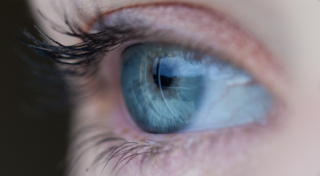"A patient with retinitis pigmentosa regains some vision using a gene derived from algae" by Yasser Elshatory, MD, PhD, FACS
Nerve impulses convey humans' special senses. Without nerve impulses, humans are unable to feel, taste, smell, hear or see. These impulses depend on special proteins known as ion channels, that allow electrolytes like sodium, potassium, and chloride to pass across cell membranes. In single cell organisms, like algae, some of these ion channels are light-sensitive (light-gated ion channels); meaning, light can activate the ion channel, and subsequently affect a downstream cellular process (like cellular motility). These light-gated ion channels have been utilized extensively in the past two decades to study neural circuits. This technique is referred to as optogenetics. Earlier this week, researchers in Pittsburgh, Switzerland and France reported results of using optogenetics for the first time in humans. A microbial protein conferring light sensitivity onto retinal ganglion cells was expressed using viral-based gene therapy delivered with an intravitreal injection (an injection into the vitreous cavity of the eye). The protein expressed was a modified channelrhodopsin. Channelrhodopsins are what permit single cell organisms like algae to display phototaxis (i.e., their ability to move in response to light). This molecular trick bypassed degenerated light-sensing photoreceptor cells in a patient with retinitis pigmentosa, and allowed a patient to recover some limited sight with image-enhancing goggles.
With the exception of melanopsin-expressing retinal ganglion cells, retinal ganglion cells do not ordinarily detect light. Instead, retinal ganglion cells are normally conveying visual information coming from other cells in the retinal circuit--namely, the retinal bipolar cells. Bipolar cells convey electrical impulses from photoreceptor cells (the rods and cones). This circuit bypass means that with this technique, less well-defined information is being conveyed to the brain. Indeed, the researchers indicated that the patient spent several months learning to interpret what they were “seeing.” While more research and trials are needed, this adds to the growing list of strategies to recover lost vision in patients with acquired or inherited retinal degeneration.
Press release link:


Comments
Post a Comment